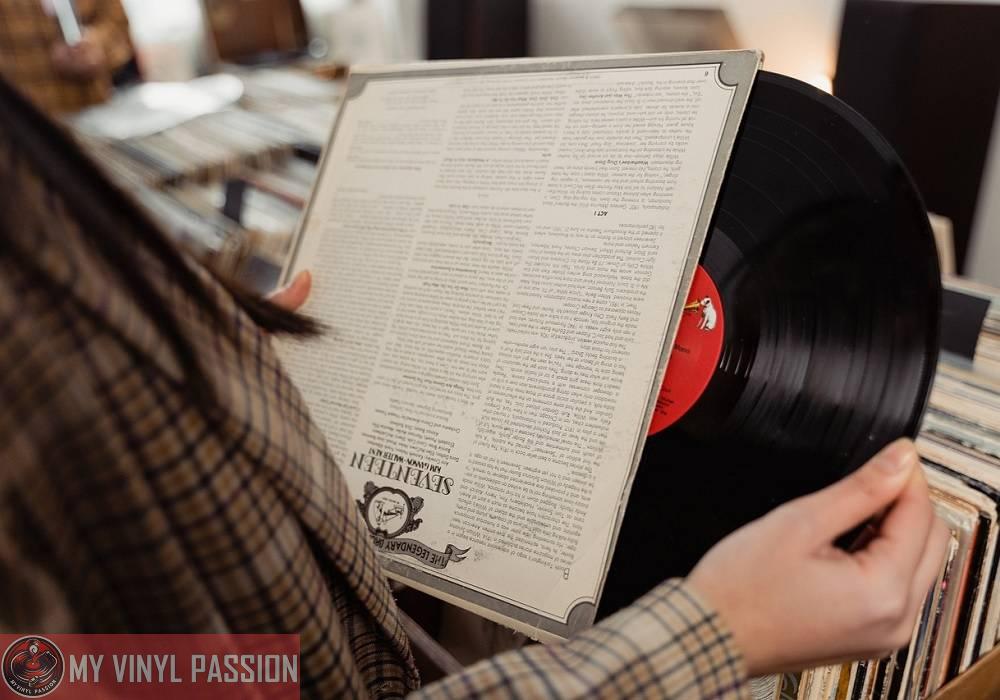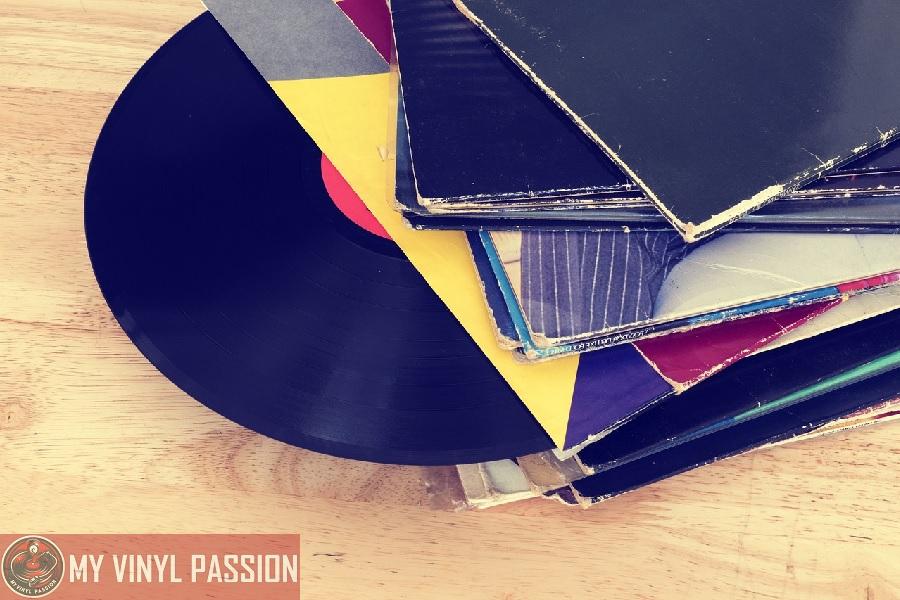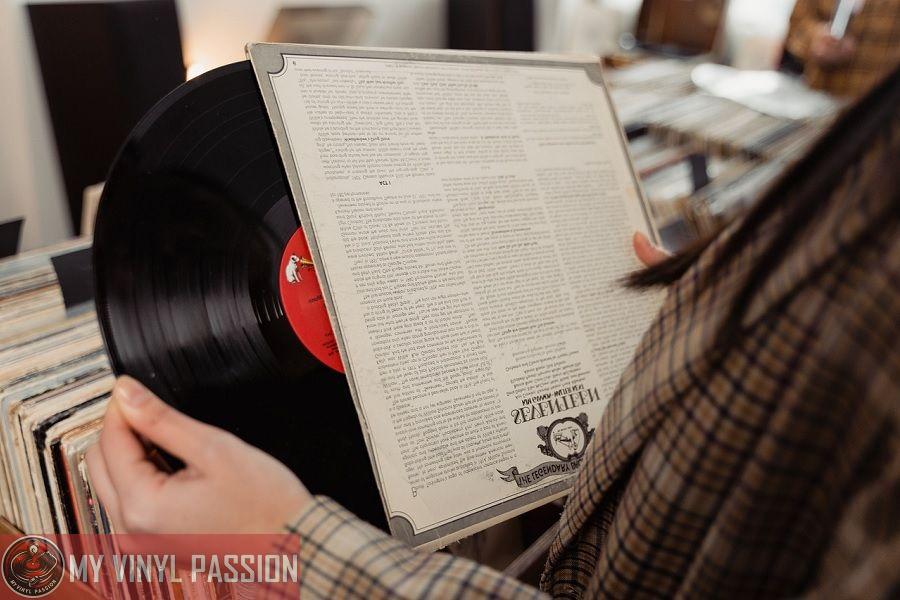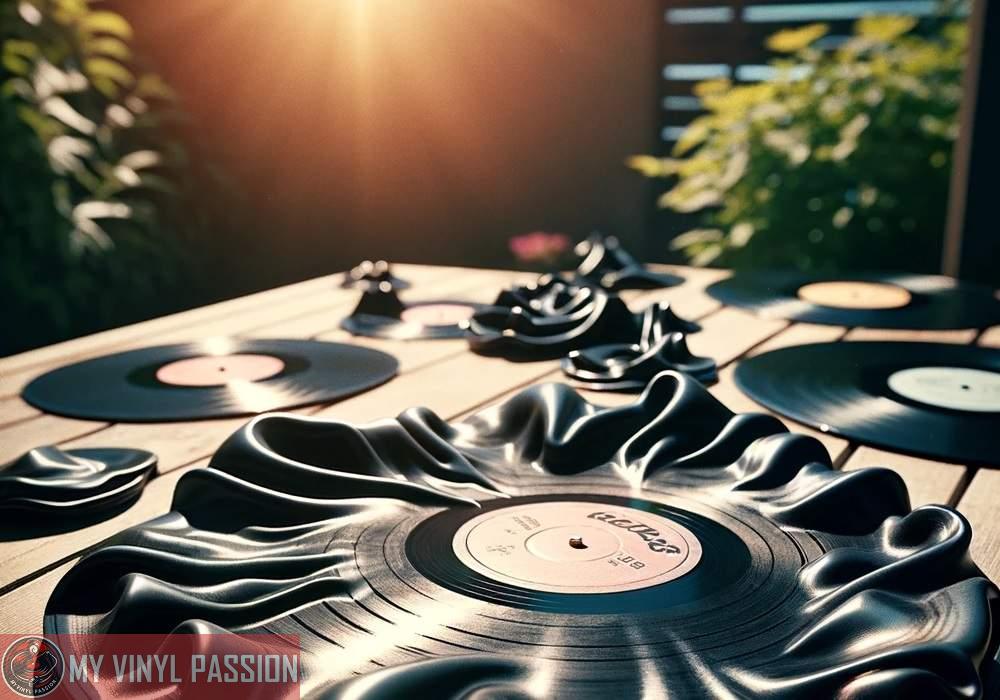Cleaning vinyl records is often a delicate task, with various methods available to ensure the longevity of your cherished collection.
Surprisingly, one such method involves using wood glue, a substance typically associated with carpentry and repairs.
The technique capitalizes on wood glue’s ability to harden into a plastic-like layer that can peel away from the non-porous vinyl surface, potentially lifting and removing dust, grime, and other contaminants that have settled into the grooves of your records over time.
In Summary
Deep Cleaning Method: Wood glue can be used for deep cleaning vinyl records by forming a layer that, when peeled off, removes deep-seated dirt and grime from the grooves.
Application Technique: Apply a thin, even layer of wood glue over the entire surface of the record, avoiding the label, and allow it to dry completely.
Peeling Process: Once the glue is fully dried, carefully peel it off from the edge; this process should lift away dust, dirt, and other contaminants from the grooves.
Risk of Damage: While effective for some, this method carries a risk of damaging the record if not done carefully! It’s not recommended for rare or valuable vinyl records.
When you apply a layer of wood glue across the surface of a vinyl record and allow it to dry completely, it forms a film that adheres to the minute particles and debris trapped in the grooves.
Upon peeling off the glue, the theory suggests that you will also remove the accumulated detritus without harming the record itself. This method has garnered attention for its simplicity and the seemingly counterintuitive use of an adhesive product for cleaning purposes.
However, this method is not without its risks.
It is crucial to use the right type of wood glue and apply it carefully to avoid damaging your records.
The adhesive must be completely dry before removal, and the process requires a steady hand and patience.
It is a method often debated among audiophiles and collectors, with strong opinions on both sides regarding its efficacy and safety.
Understanding Vinyl Records and Their Care
Maintaining your vinyl records is crucial to ensuring their longevity and the quality of sound they produce. Proper care includes regular cleaning to prevent damage and wear from dust and dirt.
Components of Vinyl Records
Your vinyl records are crafted with precision, featuring grooves on their surface that form a delicate spiral from the outer edge to the center. These grooves interact with the needles of your turntable to produce sound.
The record label at the center provides information and branding, while the inner sleeve serves as a protective layer against scratches and dust accumulation.
The Importance of Cleaning
Cleaning your vinyl records is essential to preserve their sound quality and life. Dirt, dust and static can collect in the grooves, causing pops and crackles during playback. Regular cleaning removes these unwanted particles, ensuring a clearer audio experience.
Gentle methods are preferred to avoid any potential harm to the delicate grooves.
Risks of Improper Handling
Improper handling can introduce dust and dirt into the grooves, or worse, cause scratches that are impossible to repair. Always hold your records by the edges or the label to minimize contact with the grooves.
When not in use, store your records vertically in their inner sleeves to protect against dust and reduce the chances of warping. Remember, incorrect cleaning techniques can be just as harmful as not cleaning at all, so it’s important to follow recommended practices.
The Wood Glue Cleaning Method Explained
The wood glue method is a unique approach to record cleaning that offers a deep cleanse by peeling away dirt and dust once the glue has set. This method requires patience but yields a transparent and restored surface on your vinyl records.
How the Wood Glue Method Works
When you apply a layer of wood glue to the surface of your record, it seeps into the grooves where dust and grime are lodged. As the glue dries, it binds to the contaminants. Once fully dried, the layer of glue becomes a solid film that you can peel off.
This action removes the trapped dirt, leaving the grooves of the record clean without the use of liquid cleaners or brushes which might cause damage.
Steps:
- Apply a layer of wood glue onto the record’s surface.
- Ensure the glue is even and covers the entire record.
- Allow to dry thoroughly (up to 24 hours).
- Peel the glue film starting from the edge, working inwards.
Tip: Use a glue that dries transparent to observe the process and ensure complete drying.
Advantages of Wood Glue Cleaning
Wood glue cleaning can greatly improve the sound quality of your vinyl records by eliminating accumulated dust and debris without harming the grooves. It is particularly effective for records that have been stored away and have not been cleaned for an extended period. The method is:
- Safe: It minimizes the risk of scratching or damaging the vinyl.
- Effective: It reaches deep into the grooves to clean out debris that other methods may miss.
Preparing for the Wood Glue Method
Before you begin, it is important to ensure that you have a clean workspace and all the necessary materials. Your wood glue should be non-toxic and safe for use on vinyl. Avoid glue with added colors or solvents that could damage your record.
Materials:
- Non-toxic, transparent wood glue.
- A small applicator or credit card to spread the glue.
- A clean, flat surface to work on.
Preparation Steps:
- Lay the record on a flat surface.
- Clean any loose dust off with a soft, anti-static cloth.
- Make sure the room is dust-free to avoid particles sticking into the glue.
Clear your schedule and prepare for the method; remember, once the glue is applied, the record must be left undisturbed to dry completely.
Step-by-Step Guide for Cleaning Records with Wood Glue
Cleaning your vinyl records with wood glue can be highly effective in removing dust and dirt from the grooves without harming the record. This unconventional method can bring a new level of clarity to your music by adhering to and then lifting away fine particles.
Applying Wood Glue on Vinyl Records
To clean your records with wood glue, ensure your vinyl is placed on a clean, flat surface; a turntable platter can work well for this.
Then, apply a generous amount of wood glue evenly across the surface of the record. Aim for a thin layer that covers the entire playing area, but avoid getting glue on the label.
You can use a piece of plastic or a clean, flat tool to spread the glue, taking care not to leave any gaps. The glue should fill in the grooves without overflowing. Allow the glue to set until it’s completely dry, which can take up to 24 hours depending on humidity and temperature.
Removing the Glue Layer
Once the glue is dry, it forms a single layer that should be carefully peeled off starting from the edge.
Start by lifting a small section of the dried glue from the record edge using your fingertips. You may find it helpful to use a small tool to gently pry up the edge of the glue—if so, do this cautiously to avoid scratching the record.
Continue peeling slowly; the whole layer should come off in one piece, bringing dust and dirt along with it.
Inspecting the Results
After you’ve removed the glue, inspect the record closely in good lighting.
The vinyl’s grooves should now look clean and clear of debris. Rotate the record under the light to ensure all areas have been cleaned consistently. If any spots need additional cleaning, you can repeat the process, but in most cases, one application is sufficient.
The improvement in sound quality after a proper cleaning can be quite significant, making this method a valuable part of your vinyl maintenance routine.
Comparing Wood Glue to Other Cleaning Methods
When considering the maintenance of your vinyl records, the method of cleaning is crucial for preserving their quality and enhancing playback. You may find that using wood glue is a unique approach, but how does it stack up against other popular cleaning techniques?
Professional Record Cleaning Machines
Professional record cleaning machines offer a high level of convenience and effectiveness.
These machines, such as vacuum-based and ultrasonic cleaners, are specifically designed for vinyl records and can be highly efficient at removing contaminants from the grooves.
While professional machines typically provide thorough cleaning, they can be costly, making wood glue an attractive alternative for budget-conscious enthusiasts.
DIY Cleaning Solutions
DIY cleaning solutions often involve a mixture of distilled water and isopropyl alcohol, applied with a microfiber cloth or a record cleaning brush. Homebrew solutions can be cost-effective and accessible but may vary in results.
In contrast, applying wood glue to the surface of a record creates a thin film that, once dried and peeled off, can take away dirt and grime without leaving any residue, offering a deeper clean than some DIY methods.
The Role of Manual Cleaning
Manual cleaning with tools like a microfiber cloth or a Groovewasher can be a more hands-on method, allowing you to target specific areas on the record.
This process can be meditative and rewarding, though it requires time and care to avoid damage. Wood glue cleaning also involves manual effort as you must evenly spread the glue and carefully peel it off once dried, yet it could potentially lift dirt from the grooves more effectively than wiping.
Before and After Care Tips
Proper maintenance of your records before and after using wood glue for cleaning is crucial to ensure longevity and pristine sound quality. Below are specific guidelines to help you maintain cleanliness and provide best practices for storage and handling.
Maintaining Cleanliness After Wood Glue Application
After cleaning your records with wood glue, it’s essential to maintain their cleanliness to prevent dust accumulation and potential damage. Here’s how you can keep your records in top condition:
- Use an anti-static brush: Before each play, gently sweep your records with an anti-static brush to eliminate any dust particles and reduce static charges.
- Microfiber cloths rule: Immediately after the wood glue has been peeled off and the record is clean, give it a gentle wipe with a dry microfiber cloth to catch any residue that may have been left behind.
Storage and Handling Best Practices
How you store and handle your records can greatly impact their condition.
Follow these best practices:
- Inner sleeve safety: Always store your clean records in new, anti-static inner sleeves to prevent dust collection and static buildup.
- Record cleaning machines: For those with a significant collection or delicate vinyl, consider investing in a record cleaning machine to maintain cleanliness without the need for frequent glue cleaning.
- The upright rule: Store your records vertically to avoid warping and unnecessary pressure that could lead to damage.
- Handle with care: Always handle records by the edges or the label to minimize contact with the surface, keeping your freshly cleaned records in pristine condition.
FAQs
How does wood glue clean vinyl records?
Wood glue, when applied to a vinyl record, adheres to the dirt and grime within the grooves. Once dried and peeled off, it removes these contaminants, potentially improving sound quality.
What type of wood glue should be used for cleaning records?
Use a PVA (polyvinyl acetate) based wood glue, which is safe for vinyl and dries clear. Avoid any glue with added colors or solvents that could damage the record.
Is the wood glue method safe for all vinyl records?
While many users find this method effective, it carries a risk of damaging the record, especially if the glue is not applied or removed correctly. It’s not recommended for rare or valuable records.
How long does the wood glue need to dry on the record?
The drying time can vary depending on the glue brand and environmental conditions, but it generally takes about 12-24 hours for the glue to dry completely and be ready for removal.
Can this method be used on any type of vinyl record?
The wood glue cleaning method can be used on most vinyl records, but it’s advisable to test it on a less valuable record first. Avoid using it on shellac or 78 RPM records, as they are made from different materials that might react adversely to the glue.





